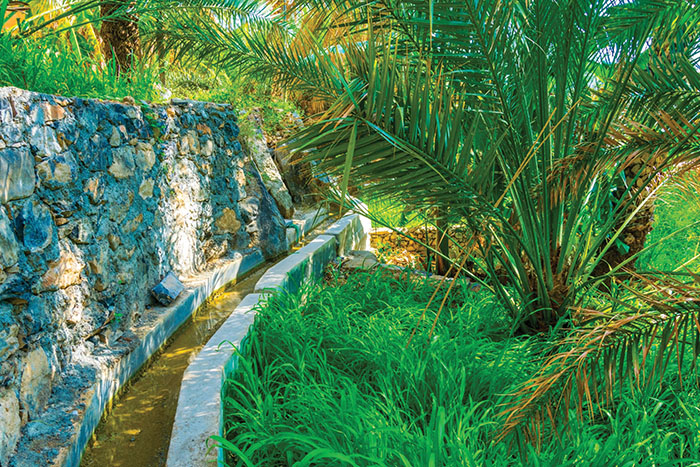
The method of delivering water from the mountains to the villages through a series of canals that allowed villagers to easily irrigate their fields, Oman’s Falaj system was so intricate to the country in the past – and still is – that five of these irrigation networks within the country have been named UNESCO World Heritage Sites.
“The origins of this system of irrigation may date back to AD 500, but archaeological evidence suggests that irrigation systems existed in this extremely arid area as early as 2500 BC,” said UNESCO. “Using gravity, water is channelled from underground sources or springs to support agriculture and domestic use.
“The fair and effective management and sharing of water in villages and towns is still underpinned by mutual dependence and communal values and guided by astronomical observations,” added the organisation. “Numerous watchtowers built to defend the water systems form part of the site reflecting the historic dependence of communities on the falaj system.”
There are several Falaj systems – the plural for which is Aflaj – in the country, among the most famous of which are Falaj Al Khatmeen in Birkat Al Mouz in Nizwa, and Falaj Al Malki in the Wilayat of Izki.
“The falaj system is the traditional method developed centuries ago for supplying water for irrigation and domestic purposes,” explained the Food and Agricultural Organisation. “Many of the systems currently in use are estimated to be over a thousand years old. The falaj comprises the entire system: the source, which might be the upper reaches of wadis from which water is diverted, a qanat, or a spring, the conveyance system, which is usually an open earth or cement-lined ditch, and the delivery system.”
“The falaj has assumed a social significance and well-established rules of usage, maintenance and administration have evolved,” added the FAO. “Based on the source, three types of falaj can be distinguished: the Ghaily falaj, which is a simple diversion and canalisation of surface wadi flow; it uses normally open channels to collect and transfer the water. It dries out after long periods of drought with low rainfall since it depends on a shallow underground water table.
“The second is the Iddi or Dawoodi falaj, also called qanat, which is a very ancient system for extracting water from the water table by gravity, through a nearly horizontal gallery,” the organisation explained. “This type of falaj has a system of deep and long channels, the lengths of which sometimes extend to 16 km, while the whole falaj network may reach 45km, while the third is the Aini falaj, which is a simple canalisation of springs.”